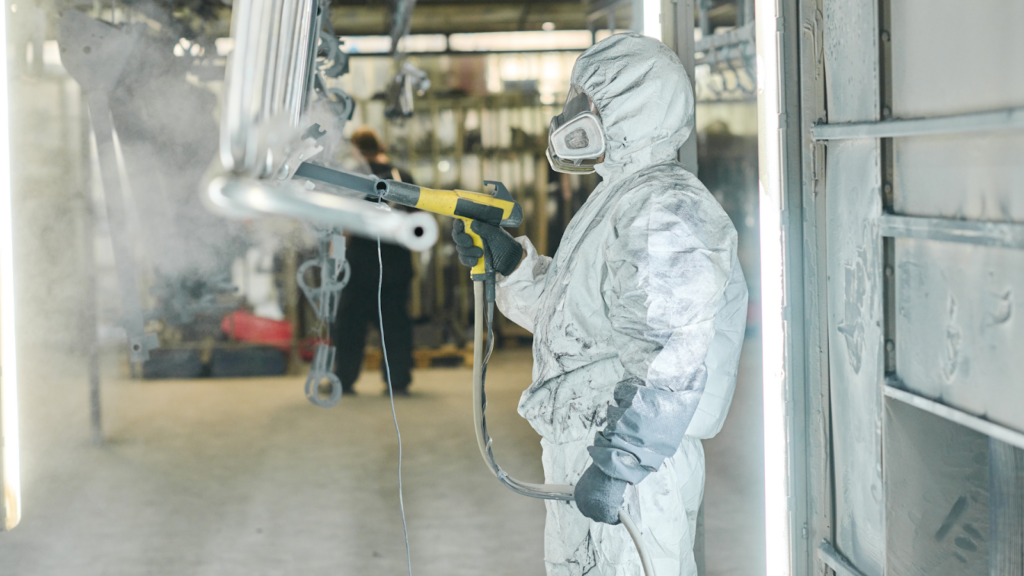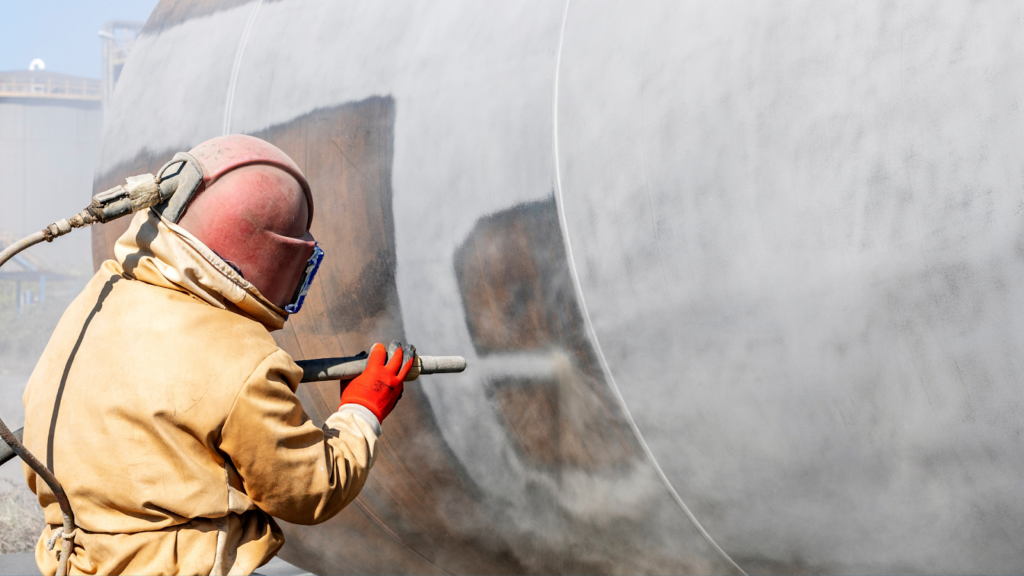MIL-S-5002 is an essential specification set by the U.S. Department of Defense for preparing metal surfaces before applying protective coatings, crucial in aerospace and defense industries. It focuses on detailed preparation methods like cleaning, descaling, and applying chemical conversion coatings to ensure metal parts are ready for paint and other coatings, enhancing their durability and performance. This preparation is vital for military and aerospace hardware to withstand harsh conditions and wear. Beyond its critical role in military applications, MIL-S-5002 is also widely used in the commercial aerospace and automotive sectors, highlighting its importance in maintaining the longevity and reliability of metal parts. This guideline not only sets high-quality standards but also offers practical insights for manufacturers, engineers, and quality assurance professionals on applying these standards effectively across different industries.
The Importance of MIL-S-5002 in Industry
The significance of MIL-S-5002 extends far beyond a mere procedural guideline for surface treatment; it is a cornerstone of quality assurance in the manufacture and maintenance of military equipment and aerospace components. This specification plays a pivotal role in ensuring that the critical parts and machinery used in defense and aerospace are able to withstand the extreme conditions they are exposed to, thereby safeguarding the lives of service members and civilians alike.
Enhanced Durability and Reliability
By standardizing the methods for surface preparation, MIL-S-5002 ensures that metal components receive the highest level of protection against environmental stressors, such as corrosion and wear. This not only extends the service life of these components but also enhances their reliability, a crucial factor in military and aerospace operations where equipment failure can have severe consequences.
Cost Efficiency
Adhering to MIL-S-5002 standards can lead to significant cost savings in the long run. By preventing premature wear and corrosion, the need for frequent repairs and replacements is reduced, thereby minimizing downtime and operational costs. Furthermore, compliance with these standards can prevent costly quality issues that might arise from improper surface treatment.
Interoperability and Standardization
MIL-S-5002 serves as a unifying standard that facilitates interoperability among components from different manufacturers. This standardization is vital for the assembly of complex systems, ensuring that all parts meet the same rigorous criteria for surface preparation and treatment.
Safety and Performance
Ultimately, the importance of MIL-S-5002 lies in its contribution to the safety and performance of military and aerospace equipment. By ensuring that all metal surfaces are adequately prepared for coating, the specification helps to prevent equipment failures that could lead to operational setbacks or, in worst-case scenarios, loss of life.
Key Benefits of Following MIL-S-5002 Standards
Adhering to MIL-S-5002 standards offers a multitude of benefits for organizations involved in the manufacture and maintenance of military and aerospace components. These benefits not only contribute to the optimal performance and longevity of equipment but also have broader implications for operational efficiency and safety. Here are the key advantages of implementing MIL-S-5002 specifications:
Improved Equipment Longevity
One of the most significant benefits of following MIL-S-5002 is the enhanced longevity of equipment. The rigorous surface preparation and treatment processes defined in the specification ensure that metal components are well-protected against corrosion and environmental degradation, thereby extending their usable life and reducing the need for replacements.
Enhanced Safety
The reliability of military and aerospace equipment is paramount, as any failure could potentially have catastrophic consequences. Compliance with MIL-S-5002 helps to minimize the risk of equipment failure by ensuring that all components meet stringent quality standards. This, in turn, enhances the safety of the personnel operating the equipment.
Cost Savings
Although the initial processes of cleaning, descaling, and applying conversion coatings as prescribed by MIL-S-5002 might seem time-consuming and resource-intensive, they lead to substantial cost savings in the long run. By reducing the frequency of repairs and replacements, organizations can achieve a lower total cost of ownership for their equipment.
Consistency and Quality Assurance
MIL-S-5002 standards provide a clear framework for surface treatment, ensuring consistency in the quality of components across different batches and manufacturers. This consistency is crucial for the assembly of complex systems, where the interoperability of parts is essential for overall performance.
Regulatory Compliance and Industry Recognition
Following MIL-S-5002 not only ensures compliance with military procurement requirements but also enhances an organization’s reputation within the industry. Adherence to such standards is often viewed as a mark of quality and reliability, opening up opportunities for new contracts and partnerships.
Application Methods for MIL-S-5002 Compliance
Achieving compliance with MIL-S-5002 standards involves a series of meticulous surface preparation and treatment procedures designed to ensure metal components are adequately prepared for coating. The application methods encompass various techniques, each tailored to address specific types of metal surfaces and their unique requirements. Here’s a closer look at these critical application methods:
Cleaning and Degreasing
The first step in the MIL-S-5002 compliance process involves thoroughly cleaning and degreasing the metal surfaces. This step is crucial for removing any contaminants, such as oils, grease, and dirt, that could hinder the effectiveness of subsequent treatments. Solvent cleaning, alkaline cleaning, and ultrasonic cleaning are common methods employed to achieve a clean surface.
Descaling and Rust Removal
After cleaning, the next step is to remove any scale, rust, or other oxidation products from the metal surface. This can be accomplished through mechanical means such as abrasive blasting, or chemical methods using acid pickling. The choice of method depends on the type of metal and the condition of its surface.
Surface Activation
Before applying any coatings, the metal surface may need to undergo a process of activation to enhance its adhesion properties. This is typically achieved through chemical etching, which creates a rougher surface profile that improves the mechanical bond between the metal and the coating.
Application of Chemical Conversion Coatings
A key component of MIL-S-5002 is the application of chemical conversion coatings. These coatings provide a protective layer that enhances corrosion resistance and improves paint adhesion. Chromate conversion coatings are commonly used, though non-chromate alternatives are available for environmental considerations.
Inspection and Quality Control
After the surface treatments are applied, thorough inspection and quality control procedures are essential to ensure compliance with MIL-S-5002 standards. This may involve visual inspections, adhesion tests, and corrosion resistance evaluations to verify that the surface preparation meets the required specifications.
How to Comply with MIL-S-5002 Requirements
Compliance with MIL-S-5002 standards is essential for manufacturers and suppliers working with the military and aerospace sectors, ensuring that metal components meet the stringent requirements for surface preparation and treatment. Achieving and maintaining this compliance involves a comprehensive approach, encompassing the understanding of the standard’s specifications, rigorous application of the prescribed treatment processes, and thorough documentation and quality assurance practices. Here’s a guide to navigating the compliance process:
Understand the Specifications
The first step toward compliance is a thorough understanding of the MIL-S-5002 standard and its requirements. This involves studying the specification document to grasp the detailed requirements for cleaning, descaling, and applying chemical conversion coatings. It’s crucial to understand the nuances of the standard to ensure that all aspects of the surface preparation processes align with the prescribed guidelines.
Implement the Required Processes
Based on the understanding of MIL-S-5002, implement the specified surface treatment processes, including cleaning, descaling, and the application of chemical conversion coatings. This requires setting up the necessary equipment and facilities, sourcing appropriate materials and chemicals, and training staff on the correct procedures. Ensuring that these processes are carried out with precision and consistency is vital for compliance.
Quality Control and Inspection
Rigorous quality control measures are essential for compliance with MIL-S-5002. This includes regular inspections and testing of treated surfaces to verify that they meet the standard’s requirements. Utilizing appropriate testing methods and equipment to assess the effectiveness of cleaning, descaling, and coating processes ensures that any deviations from the standard are identified and corrected promptly.
Documentation
Maintaining detailed records of the surface treatment processes and their outcomes is a critical component of MIL-S-5002 compliance. Documentation should include information on the materials and chemicals used, process parameters, inspection and test results, and any corrective actions taken. This documentation serves as evidence of compliance and is crucial for audits and quality assurance reviews.
Continuous Improvement
Compliance with MIL-S-5002 is an ongoing process that requires continuous monitoring and improvement. This involves staying updated on any revisions to the standard, evaluating the effectiveness of current processes, and making necessary adjustments to enhance compliance and efficiency.
Frequently Asked Questions
What is MIL-S-5002 and who issues it?
MIL-S-5002 is a military standard issued by the United States Department of Defense. It specifies the requirements for surface cleaning and treatment of metal parts prior to applying protective coatings.
Why was MIL-S-5002 developed?
It was developed to establish uniform procedures and quality standards for the preparation of metal surfaces, ensuring optimal adherence and effectiveness of protective coatings in military equipment.
Can MIL-S-5002 be applied to non-military projects?
Yes, while MIL-S-5002 is designed for military applications, its principles can be beneficial for non-military projects requiring high standards of metal surface preparation and coating.
Is compliance with MIL-S-5002 mandatory for all military suppliers?
Compliance is required for suppliers and manufacturers working on projects that specify MIL-S-5002 standards for metal surface treatment and coating.
How often is MIL-S-5002 updated?
The standard is reviewed and potentially updated periodically to incorporate technological advancements and feedback from industry professionals.
What types of metal surfaces does MIL-S-5002 cover?
MIL-S-5002 covers a wide range of metal surfaces, including but not limited to aluminum, steel, and copper alloys, ensuring they are adequately prepared for coating applications.
Does MIL-S-5002 specify environmental or safety guidelines?
Yes, it includes guidelines on environmental protection and safety measures to mitigate the impact of surface treatment processes and chemical handling.
How does MIL-S-5002 impact the longevity of military equipment?
By ensuring thorough surface preparation, MIL-S-5002 enhances the adherence and effectiveness of protective coatings, significantly improving the equipment’s resistance to corrosion and wear.
Are there certification programs for MIL-S-5002 compliance?
While there is no official certification, organizations can demonstrate compliance through rigorous adherence to the standard’s guidelines and thorough documentation of their processes.
How can an organization ensure its staff is knowledgeable about MIL-S-5002?
Organizations can offer training programs focused on MIL-S-5002 requirements and best practices, ensuring their staff is well-versed in the standard’s application and compliance procedures.

